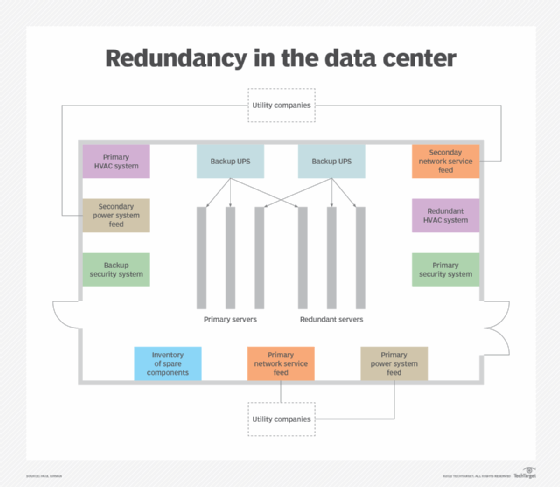Who Pays Redundancy Money? Recognizing Employer Responsibilities in the UK
Who Pays Redundancy Money? Recognizing Employer Responsibilities in the UK
Blog Article
Discovering the Operational Dynamics of Firm Redundancy and Its Long-Term Sustainability

Redundancy Strategies for Organization Connection
In order to ensure continuous procedures, companies need to execute efficient redundancy techniques for company continuity. Redundancy in this context refers to the duplication of critical components or functions within a system to alleviate the impact of prospective failings. By incorporating redundancy approaches, organizations can enhance their durability against disruptions created by numerous variables such as all-natural calamities, devices failures, or cyber-attacks.
One typical redundancy approach is the application of back-up systems and information storage solutions. This entails producing matches of important information and systems that can be turned on in case of a key system failure. Furthermore, companies can establish redundant communication networks and source of power to keep connection and operations throughout unpredicted events.
Additionally, cross-training workers to carry out several duties within the business can function as an important redundancy technique. This makes certain that essential tasks can still be lugged out also if essential employees are unavailable due to ailment or other factors. Overall, efficient redundancy approaches are necessary for businesses to maintain functional continuity and minimize the effect of potential disruptions.
Impact of Redundancy on Business Resilience
Given the critical function redundancy methods play in making certain service continuity, checking out the influence of redundancy on organizational durability ends up being important for understanding the holistic functional dynamics of a company. Redundancy, when strategically applied, can significantly add to enhancing an organization's durability in the face of unforeseen obstacles.
Additionally, redundancy can reinforce employee spirits and self-confidence, knowing that there are contingency strategies in position to resolve unpredicted scenarios. This complacency can lead to enhanced efficiency and a much more favorable work atmosphere. Additionally, redundancy can foster development and creativity within a company as staff members feel equipped to take calculated threats, understanding that there is a safeguard to support them in case of failure. Generally, the influence of redundancy on organizational resilience is extensive, forming the long-lasting sustainability and success of a business.
Balancing Effectiveness and Adaptability in Redundancy
Attaining an unified stability in between functional efficiency and flexible adaptability is an essential obstacle in the tactical release of redundancy within organizations. Effective procedures are essential for maintaining productivity and cost-effectiveness, ensuring that resources are used optimally. Nonetheless, too much focus on performance alone can result in rigidity, making it tough for companies to adjust to unanticipated adjustments or challenges. On the other hand, flexibility allows organizations to react nimbly to developing situations, cultivating advancement and durability. Yet, way too much flexibility without a solid functional structure can result in inadequacies and inconsistency.
To stabilize effectiveness and adaptability in redundancy planning, companies must very carefully examine their operational demands, market characteristics, and critical objectives. Eventually, locating the best stability between performance and flexibility is vital for building a durable and lasting company in the face of unpredictability.
Long-Term Sustainability Via Redundancy Planning
To make certain enduring stability and security, organizations have to purposefully straighten their redundancy planning with lasting sustainability goals, thereby balancing functional efficiency with flexible versatility. Companies must watch redundancy not as a reactive solution to instant troubles but as a positive approach for long-lasting success.

Positive Actions for Sustainable Business Workflow
How can firms proactively enhance their operational sustainability for lasting success? Carrying out proactive procedures is crucial for firms intending to make certain lasting operations.
Moreover, promoting a society of constant improvement and discovering within the organization can improve flexibility to changing market conditions and customer needs. Encouraging staff member participation in decision-making processes and providing opportunities for specialist advancement can boost morale, performance, and general efficiency. Developing clear goals, keeping track of key performance indications, and consistently evaluating progression are vital parts of positive sustainability monitoring.
Working together with vendors, clients, and various other stakeholders to promote sustainable techniques throughout the supply chain can develop a causal sequence of favorable impact - redundancy pay if company goes bust. By taking aggressive actions towards operational sustainability, companies can develop strength, drive technology, and secure their lasting success in an ever-evolving organization landscape
Final Thought

In the world of organizational administration, the strategic deployment of firm redundancy stands as a pivotal yet complex technique that requires a fragile balance in between operational efficiency and long-term viability. By dissecting the functional dynamics that underpin business redundancy and examining its wider ramifications for business durability and flexibility, a nuanced understanding of exactly how redundancy methods can shape the future trajectory of a company begins to unfold.Offered the critical role redundancy approaches play in ensuring read review service connection, checking out the impact of redundancy on organizational resilience comes to be crucial for comprehending the holistic operational characteristics of a firm. Overall, the impact of redundancy on organizational strength is profound, shaping the long-lasting sustainability and success of a company.
In conclusion, comprehending the functional characteristics of firm redundancy is vital for making certain long-term sustainability.
Report this page